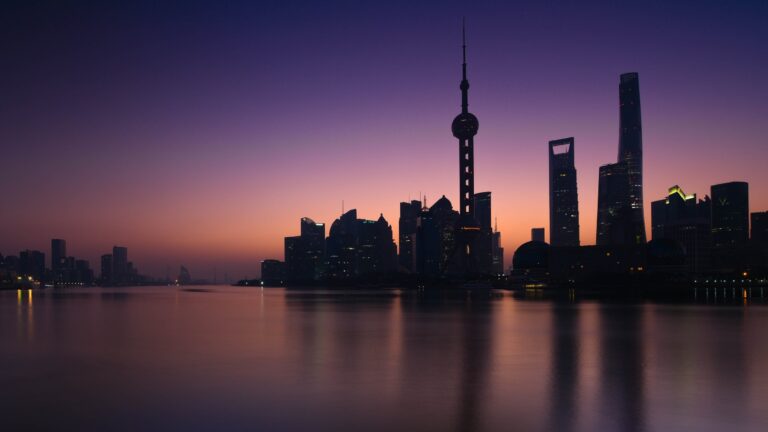
Editor’s note: Chris Morrison serves as the Area Coordinator for RUF International, overseeing the Presbyterian Church in America’s outreach to international students. He has been ministering to Chinese for over a decade, the last six of which he served as the campus minister for RUF-I at Southern Methodist University.
Several years ago a couple of Chinese students studying at a community college in a small town drove more than two hours to attend the Mid-Autumn Festival party we were hosting. They heard we threw really great parties. That was a surprise to me because most of our parties, including this one, were pretty simple. There was no special guest speaker, we did not have live music, and there were no super fun games or activities planned for the evening.
We had good food from a local Chinese restaurant that students frequented, and enough mooncakes to pass around and share with everyone who came. Those elements are an important aspect of showing hospitality to our Chinese friends and providing them an opportunity to celebrate an important holiday that most Americans are unaware exists. However, perhaps what attracted students to travel from another town was the kind of welcome they heard they would receive. There would be dozens of Americans eager to get to know them as they learned about and celebrated their culture. What made our parties great were not the activities or venues, but the people from local churches who jumped at the opportunity to welcome and befriend international students.
That was several years ago. Those parties are still important, and we still thoroughly enjoy hosting them. Many of the Chinese students and scholars we connect with love coming to the big parties we host. Yet, over the past couple of years, we have seen fewer Chinese students drawn to the large-scale events. While they are still interested in learning about and meeting people from their host culture, Chinese students are increasingly drawn to smaller, more intimate gatherings. They also tend to hang out with one another in smaller circles than in previous years. This has only been accelerated by the tumultuousness of COVID-19 and the past few months.
Although it may feel disruptive for many groups to scale down some of their larger gatherings to welcome and minister to Chinese students, it may yield greater opportunities to build deep relationships with students. I don’t remember the names of those students who drove in from another town to attend our Mid-Autumn Festival party. I’m thankful that they felt welcomed and had the opportunity to experience hospitality alongside a large group of Chinese students, but my interaction with them was brief, and I never saw them again.
Never miss a story
This fall and the coming spring may provide the perfect circumstance to experiment with smaller gatherings. Due to the coronavirus and local restrictions, many of us may not be able to hold our typical larger events. Yet, as we are able to gather in smaller, more intimate settings, we can do so with greater intentionality.
In many ways, it is encouraging that students are becoming more drawn to smaller groups over larger events. They are more interested in the relationship than the experience. They are more willing to be known, rather than having a myriad of surface-level conversations with people they may never be face to face with again.
This means it will be more important than ever to have committed volunteers from the local church to partner with you in reaching out to Chinese students. In the past, church members that came to one or two events each year could help sustain the momentum of the ministry. That is becoming less and less the case, and that’s not necessarily a bad thing. As you seek to enter smaller circles of students, equip churches and volunteers to engage with students in this way as well. As relationships deepen, it will allow for embracing evangelism as a process instead of as an event. It will open the door for speaking the Scriptures into their lives as those who bear the image of God. And it will create connections that will outlive their brief time here as an international student. We get to challenge those ministering alongside us to further embrace God’s calling on the Church to participate in his work of redeeming the nations by demonstrating biblical hospitality to the sojourner. What a tremendous privilege!
Finally, as you prepare for ministry to Chinese students this fall, start with prayer. That sounds obvious, but there’s really no other place to start if we desire our Chinese friends to know the welcome, hope, and comfort of the gospel. Go to the Psalms and cry out to the Lord on their behalf. And, depending on your relationship with them, invite them into that process with you. Help them to see that the Lord Jesus understands their pain.
A recent BBC article suggested that many Chinese students do not feel valued by the U.S. or by their home country. What a tragic and difficult feeling that is for so many students we care deeply about. While we cannot offer students political hope for the U.S. or China, we do have a far greater, everlasting hope to offer our international friends. As believers, we are under the rule of a good and perfect King who stands ready to welcome international students into his glorious kingdom. The way we interact with Chinese students and scholars may look different, but our responsibility and privilege to invite them to follow Jesus remains. May you find great joy in doing just that this fall and in the years to come!
FOR REFLECTION
Can you think of any ways you could intentionally seek depth in relationships with internationals this fall?































